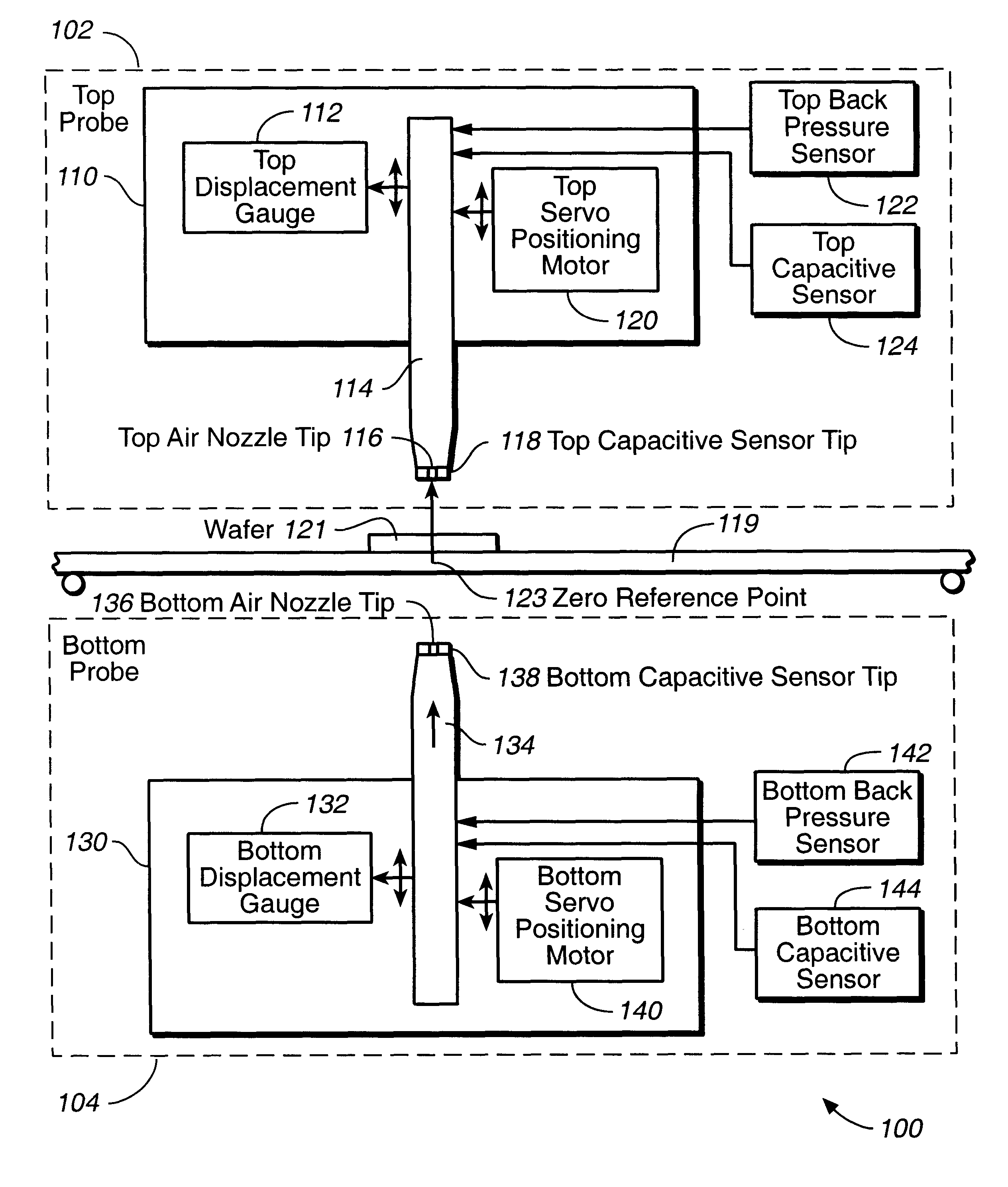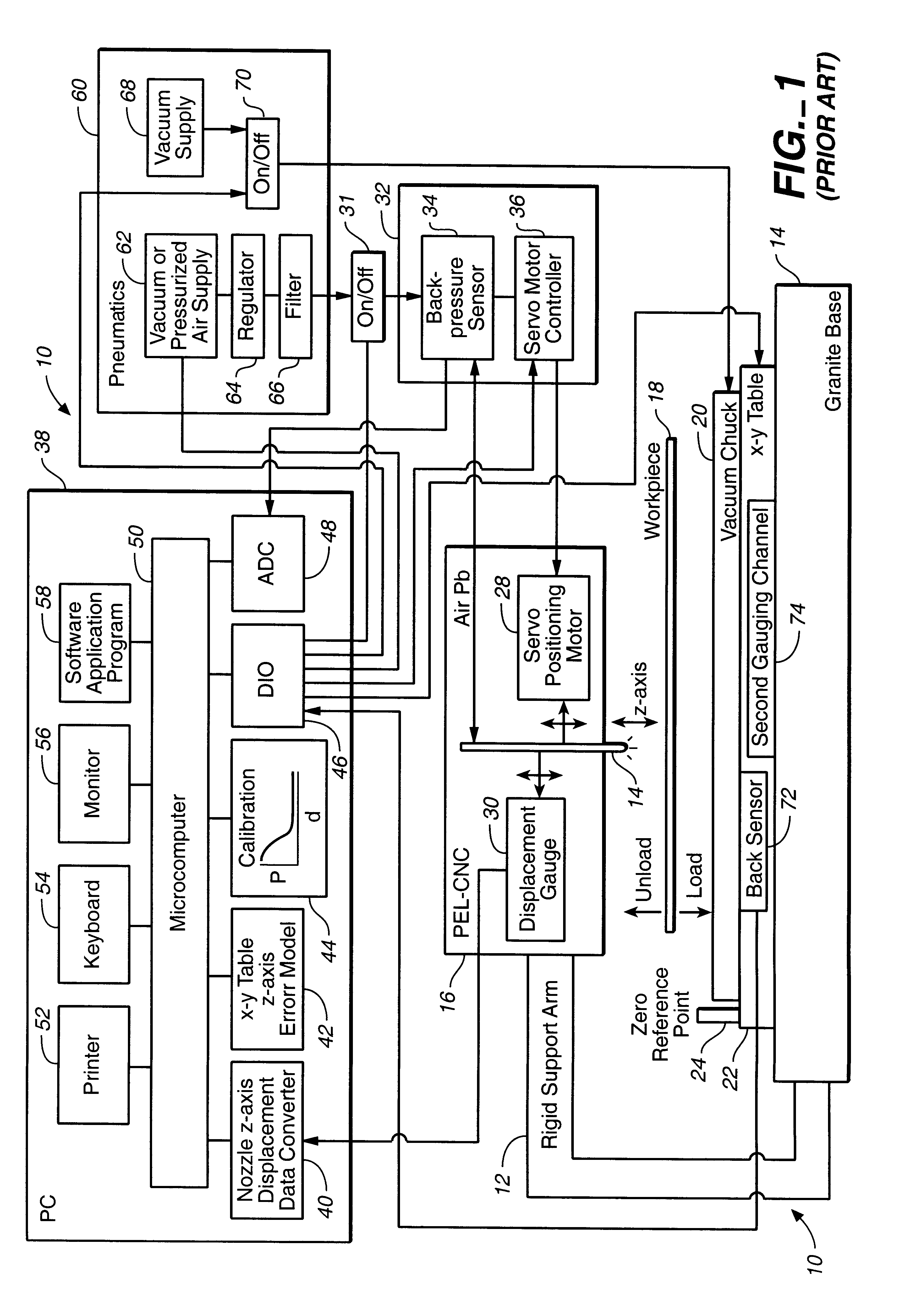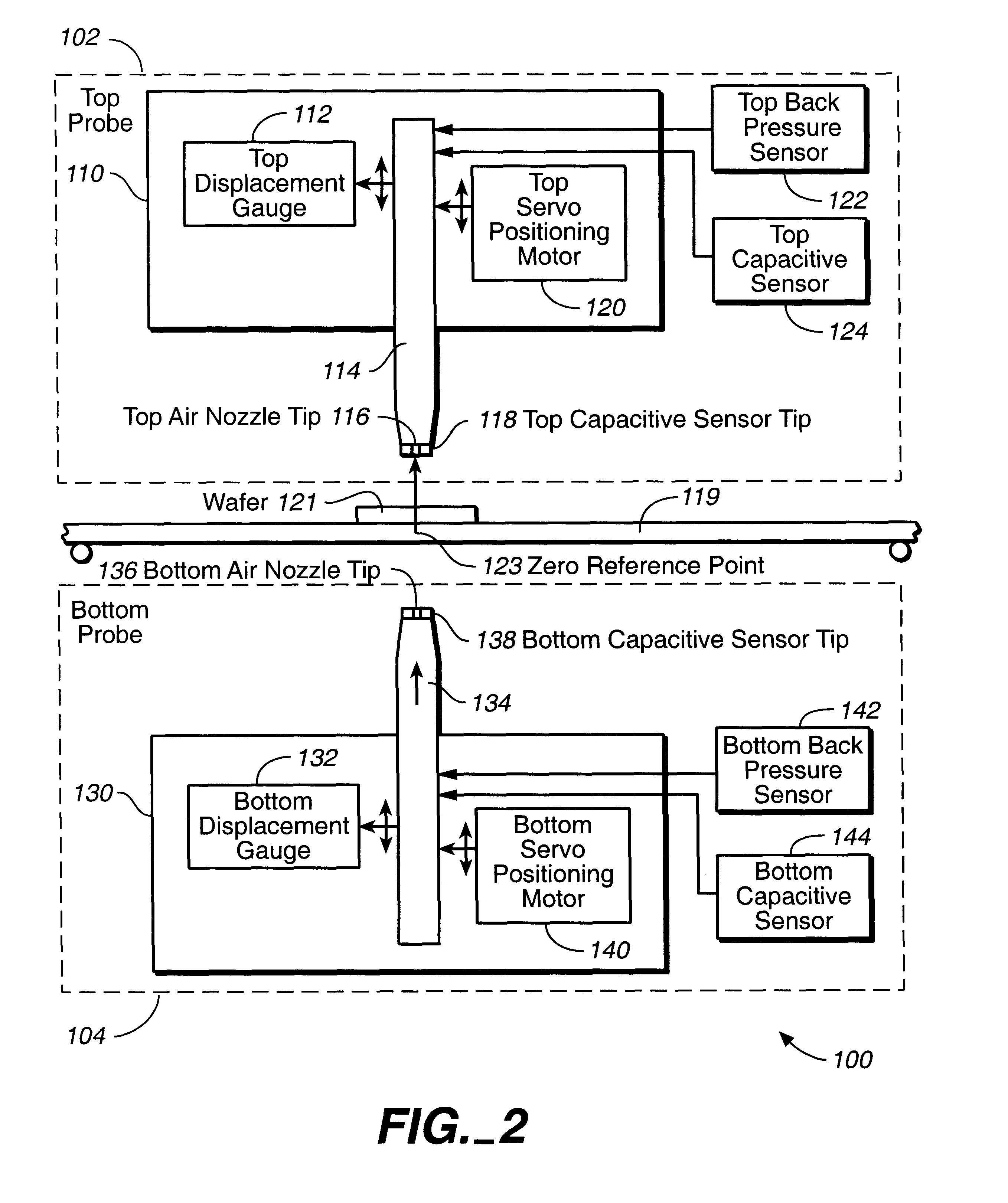Extended range and ultra precision non contact dimensional gauge for ultra thin wafers and work pieces
a non-contact dimensional, ultra-thin wafer technology, applied in the direction of fluid pressure measurement using inductance variation, instruments, mechanical means, etc., can solve the problems of back pressure measurement circuits that are sensitive to regulators, and the system of '661 patent cannot be used for geometrical parameters measurements of ultra-thin wafers with less than 200 microns thickness
- Summary
- Abstract
- Description
- Claims
- Application Information
AI Technical Summary
Problems solved by technology
Method used
Image
Examples
Embodiment Construction
An ultra thin wafer (with thickness less than 200 microns) is not rigid. When placed on the stage and held at 3 points near the edge, due to gravity, a wafer tends to bow in the center. In addition, the stress induced in a wafer through various manufacturing processes tends to give the wafer a specific shape with warpage. Bow and warpage can reach relatively large dimensions (over 1000 microns).
The prior art methods of gauging the geometrical parameters of a wafer, (like thickness, bow, and warpage) have their limitations. Indeed, when using the prior art capacitive sensors for gauging purposes, the capacitive probes have to be maintained fixed and allow only maximum bow and warpage in the range of 500 microns. For such prior art optical methods as laser beam, the wafer surface finish and the wafer's type of material generally created measurement problems. For the prior art air gauging method, air flow tends to induce vibrations on very thin work pieces (or wafers) unless the work p...
PUM
| Property | Measurement | Unit |
|---|---|---|
| linear displacement gauge | aaaaa | aaaaa |
| linear displacement gauge | aaaaa | aaaaa |
| thickness | aaaaa | aaaaa |
Abstract
Description
Claims
Application Information
 Login to View More
Login to View More - R&D
- Intellectual Property
- Life Sciences
- Materials
- Tech Scout
- Unparalleled Data Quality
- Higher Quality Content
- 60% Fewer Hallucinations
Browse by: Latest US Patents, China's latest patents, Technical Efficacy Thesaurus, Application Domain, Technology Topic, Popular Technical Reports.
© 2025 PatSnap. All rights reserved.Legal|Privacy policy|Modern Slavery Act Transparency Statement|Sitemap|About US| Contact US: help@patsnap.com



